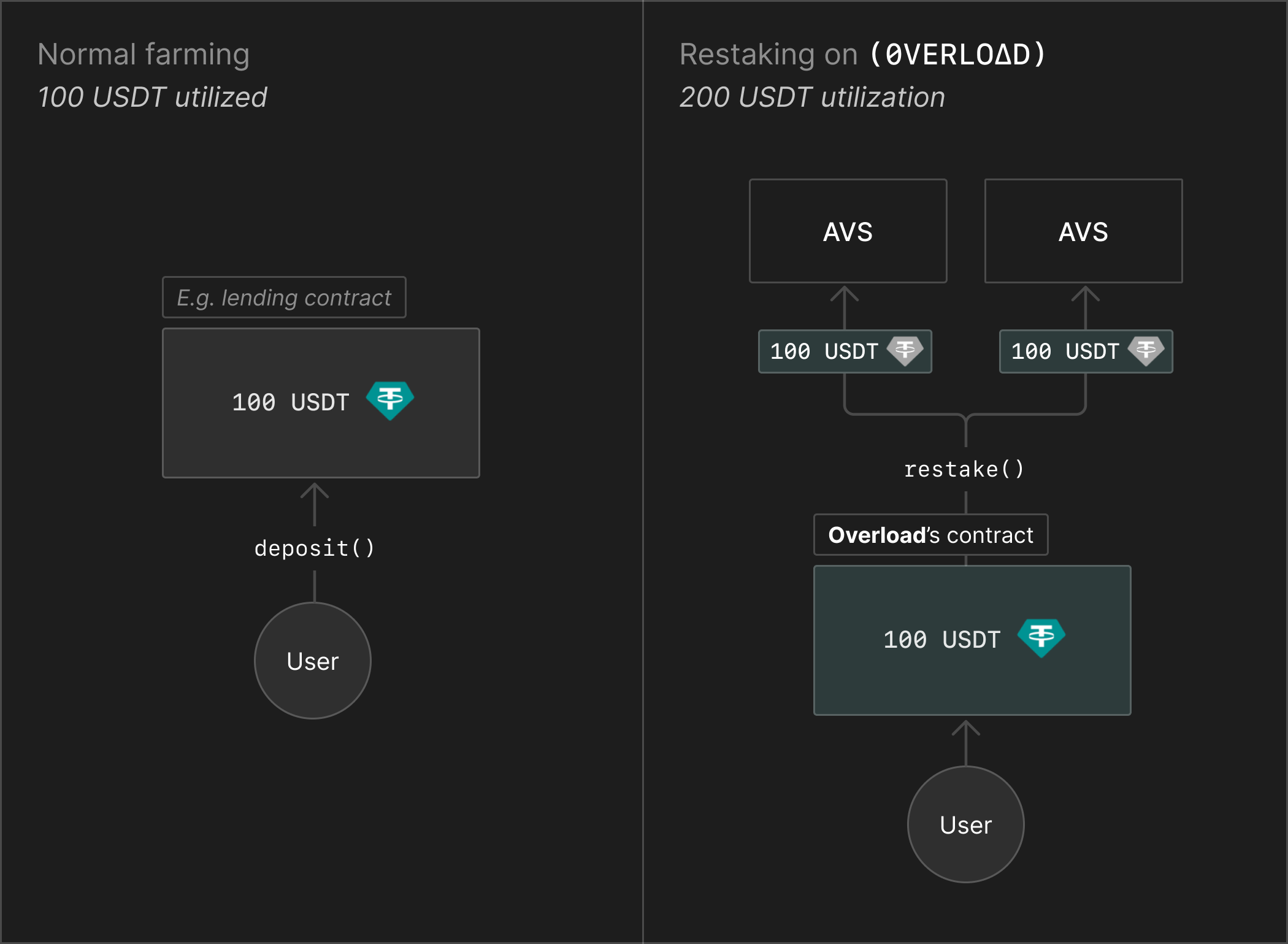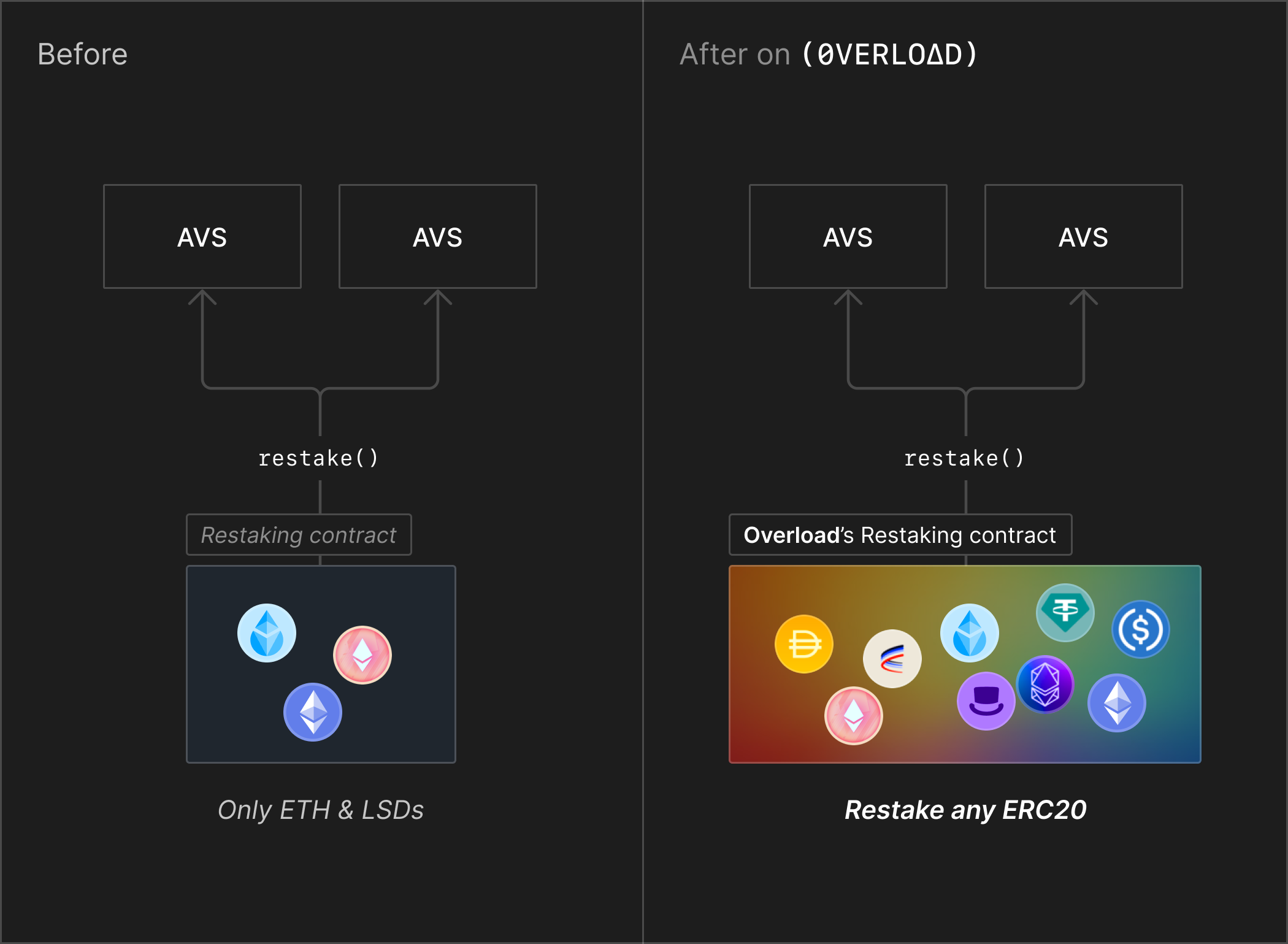Introduction
Overload: A restaking protocol, built from ground-up.
Overload is a restaking protocol that allows you to restake any ERC-20, to any contract. We believe this pushes crypto into new (and exciting) unexplored territories.
Overload is built with modularity in mind, from the ground-up. This gives developers infinite optionality in how they want their AVS (Actively Validated Service) to reach consensus. This is mostly achieved through Overload's core contract which implements ERC-6909, Hooks (improved upon Uniswap V4 Hooks) and a clever architecural design of the restaking system.
What is Restaking?
Restaking is the process for restakers and validators to provide staking security to protocols, networks and applications that need it. We call the consumers of security as Actively Validated Services, or AVSs (a term originated from EigenLayer). By putting value-at-stake, it becomes possible to bootstrap L1s, secure AI applications, and other potential AVS candidates.
At Overload, we also differentiate the terms "restaking" from what we call "stake-leveraging". Restaking is the process of putting value-at-risk to earn yield, from one or more AVSs. Stake-leveraging is intentionally putting your value-at-risk at multiple places as once, multiplying your yield on a single stack of asset.
Stake-leveraging is fundamentally not possible for normal EVM contract, as you cannot have USDT tokens in two contracts as once. But, with Overload's new standardization of restaking and retokenization, we can increase the capital efficiency of staking.

Restake any ERC20
Overload's core contract is built with the intention to defacto restaking contract. We draw inspiration from ERC-20 and ERC-6909, and we believe that we've built an industry standard for restaking, that developers can get infinite composability on.
Similarly to how ERC-20's approve function works, we use the operator value from ERC-6909 to control restaking, and the equivalent to transfer and transferFrom is delegate and delegateFrom in Overload's core contract.
To read more in-depth how we enable restaking of any ERC-20, read more in the Restaking section.
